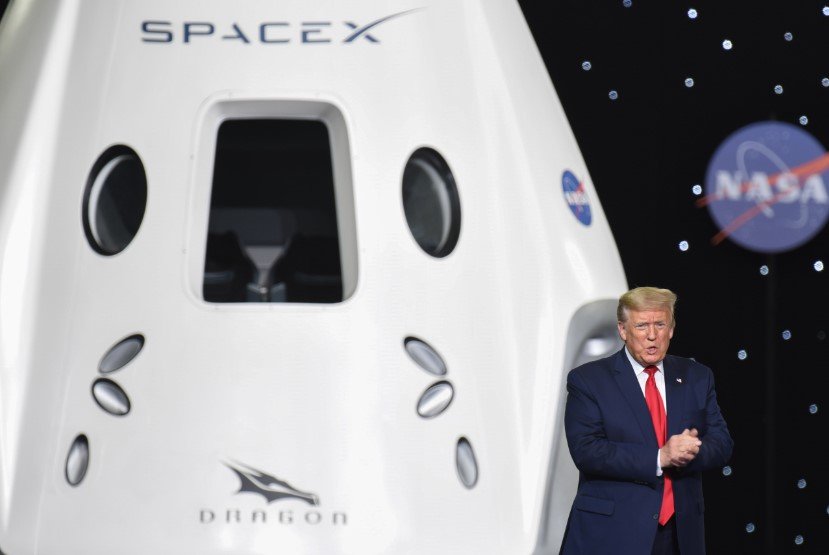As the Trump administration reclaims the White House, NASA stands at a pivotal moment. The decisions made in the next few years could reshape the space agency’s mission, priorities, and its role on the global stage.
NASA’s Future Under the Trump Administration
The return of Donald Trump to power has sparked intense speculation about the fate of NASA and the broader space industry. With key programs like Artemis facing delays, and discussions on the direction of future space exploration heating up, the next administration’s policies could lead to dramatic shifts in how the U.S. approaches space exploration.
One of the most prominent areas of focus will be the Artemis program, which aims to return humans to the Moon. While the Biden administration continued the program, the question remains whether Trump’s new policies will maintain the same momentum, alter the course, or perhaps abandon the moon mission in favor of a more Mars-focused approach.
The Role of SpaceX and Elon Musk
With Trump back in office, there are growing rumors that SpaceX—founded and led by Elon Musk—could play an even more significant role in NASA’s operations. Musk, who played a notable role in Trump’s election campaign, has publicly advocated for a redirection of NASA’s goals, suggesting that Mars is the next frontier for humanity, not the Moon.
However, the relationship between Musk’s ambitions and NASA’s larger objectives is far from straightforward. While Musk’s push for Mars might align with his personal vision for space, it would be a tough battle to shift NASA’s policy away from its current Moon-focused efforts. Congress, with its own interests in space exploration, will play a critical role in determining which direction the agency takes.

A Closer Look at the Artemis Program
The Artemis program, started under Trump’s first term, aims to land humans on the Moon and establish a sustainable presence there by the mid-2020s. While the program had strong backing from the Trump administration, there were significant delays and budget overruns. These issues were carried over to the Biden administration, which has struggled with the program’s technical and financial challenges.
If Trump were to take the helm again, it’s unclear whether he would fully support the continuation of Artemis. Given the delays and cost issues, a potential new administration might push for a reevaluation of NASA’s lunar ambitions. Trump may even decide to shift the focus to Mars, especially considering Musk’s outspoken advocacy for the Red Planet as humanity’s next destination.
Despite these uncertainties, NASA’s trajectory will also be shaped by congressional support, which has traditionally been strong for the Artemis program. The heavy investment in the program and the bipartisan backing it has received could make it difficult for any president to completely abandon the mission.
Funding for Earth and Climate Science
One area where the Trump administration’s policies could make a significant impact is in NASA’s funding for Earth sciences, particularly climate research. During his first term, President Trump called for cuts to NASA’s Earth science programs, which drew criticism from scientists and environmental advocates.
In a new administration, these debates will likely resurface. Budget decisions related to climate science may spark tensions, especially as space exploration and climate change have increasingly become interconnected. While Trump’s past stance was to focus more on exploration and space technology, the pressure from scientific communities to continue Earth-focused research might become a sticking point.
The Space Race and International Relations
Another element of NASA’s future under Trump is the potential for shifts in the space race. Under the Biden administration, NASA’s international partnerships—particularly with the European Space Agency and Russia—have been important for advancing space exploration goals. However, Trump’s administration might take a more isolationist approach, potentially reducing cooperation with international partners.
In particular, China’s growing space ambitions could prompt the U.S. to either strengthen its relationships with allies or pursue a more independent course. With the Artemis program’s goal of returning to the Moon, international collaboration has been a key factor in pushing forward the mission. If Trump were to reconsider these partnerships, it might delay or complicate efforts in space exploration.
The Role of Private Companies in Space Exploration
As private space companies, particularly SpaceX, have grown in influence, the lines between public and private space initiatives have become increasingly blurred. Trump’s second term could see a further merging of NASA’s goals with private companies’ capabilities.
Already, under Trump, SpaceX has received significant contracts for launching satellites, resupplying the International Space Station, and even for future lunar missions. With SpaceX’s advancements in spacecraft and rockets, it seems likely that Trump’s administration could continue to leverage the private sector’s innovations. This relationship could drive cost-efficiency in NASA’s missions and perhaps even lead to the privatization of some space exploration functions.
In contrast, some lawmakers might oppose too much dependence on private companies, fearing the loss of government oversight. The balance between maintaining a robust public space agency and encouraging private sector involvement will be a key debate during Trump’s potential second term.
A Defining Moment for NASA’s Future
The next few years will be a defining moment for NASA, as the Trump administration’s policies could either accelerate space exploration or pull the agency in a new direction. With new technological developments, shifting political priorities, and the ongoing push from private industry, NASA’s path forward is anything but clear.
While speculation will continue to mount regarding what changes could come, one thing is certain: the space agency’s future will be shaped by the decisions made at the highest levels of government. Only time will tell if these changes will propel humanity to the Moon, Mars, or beyond.
